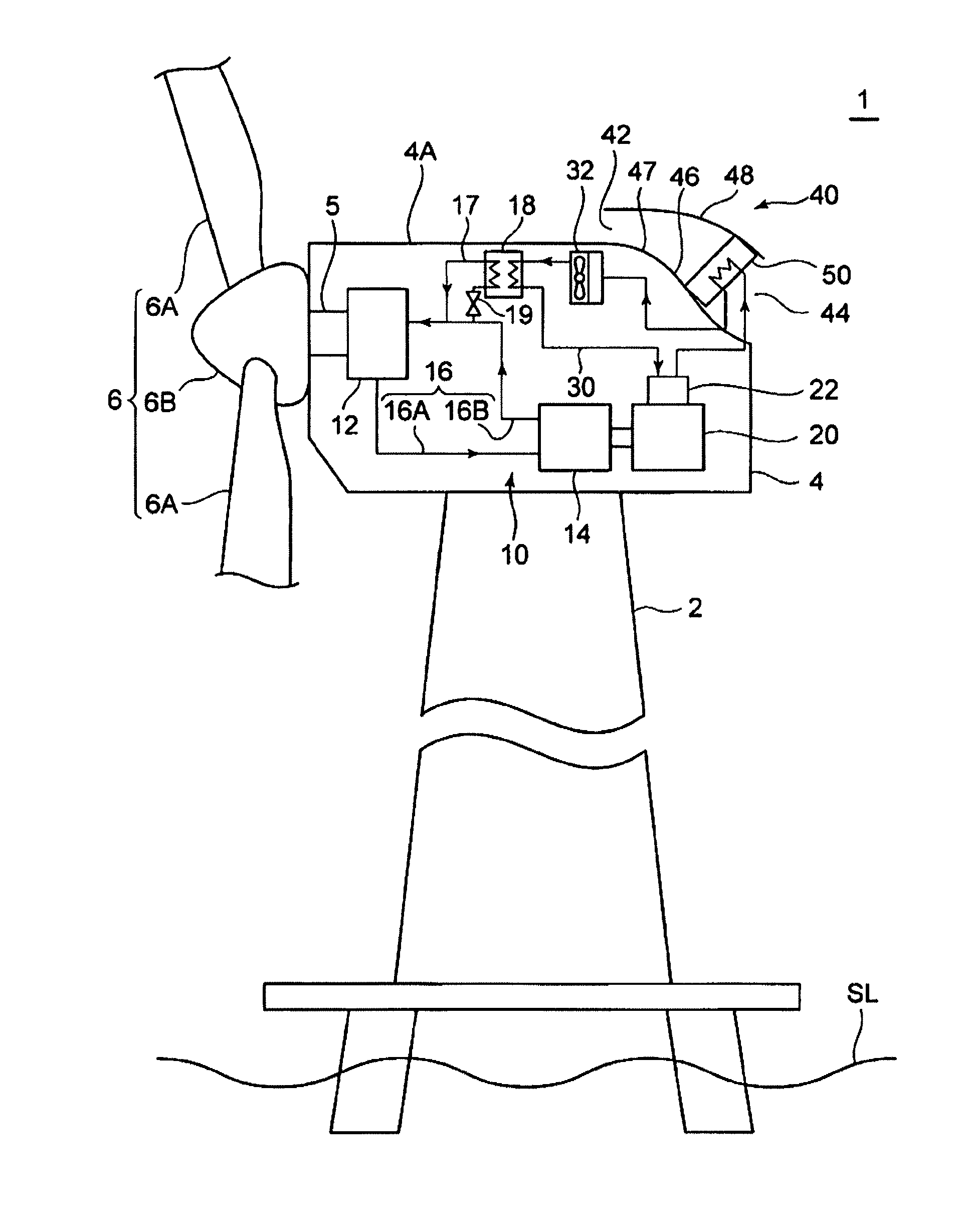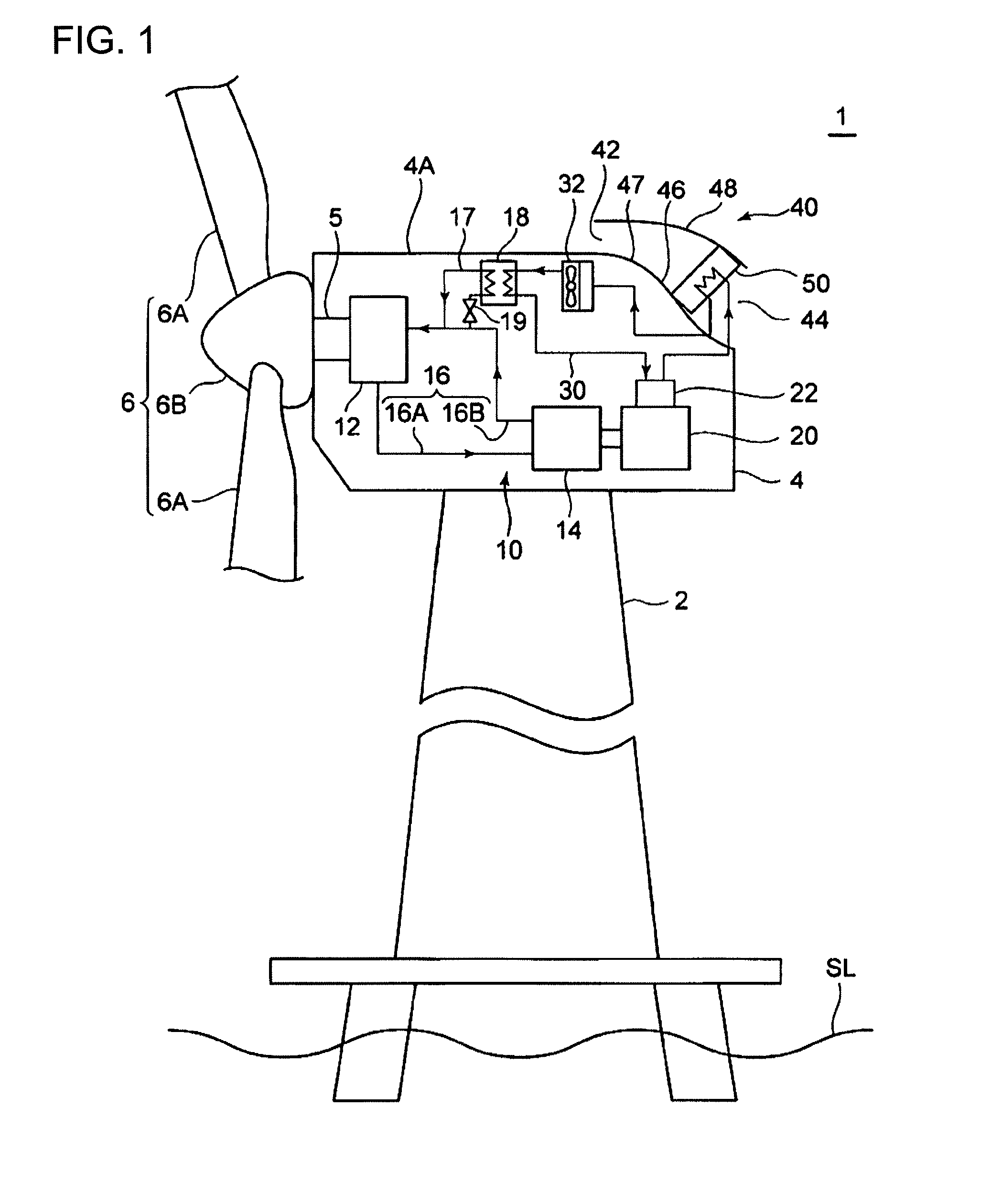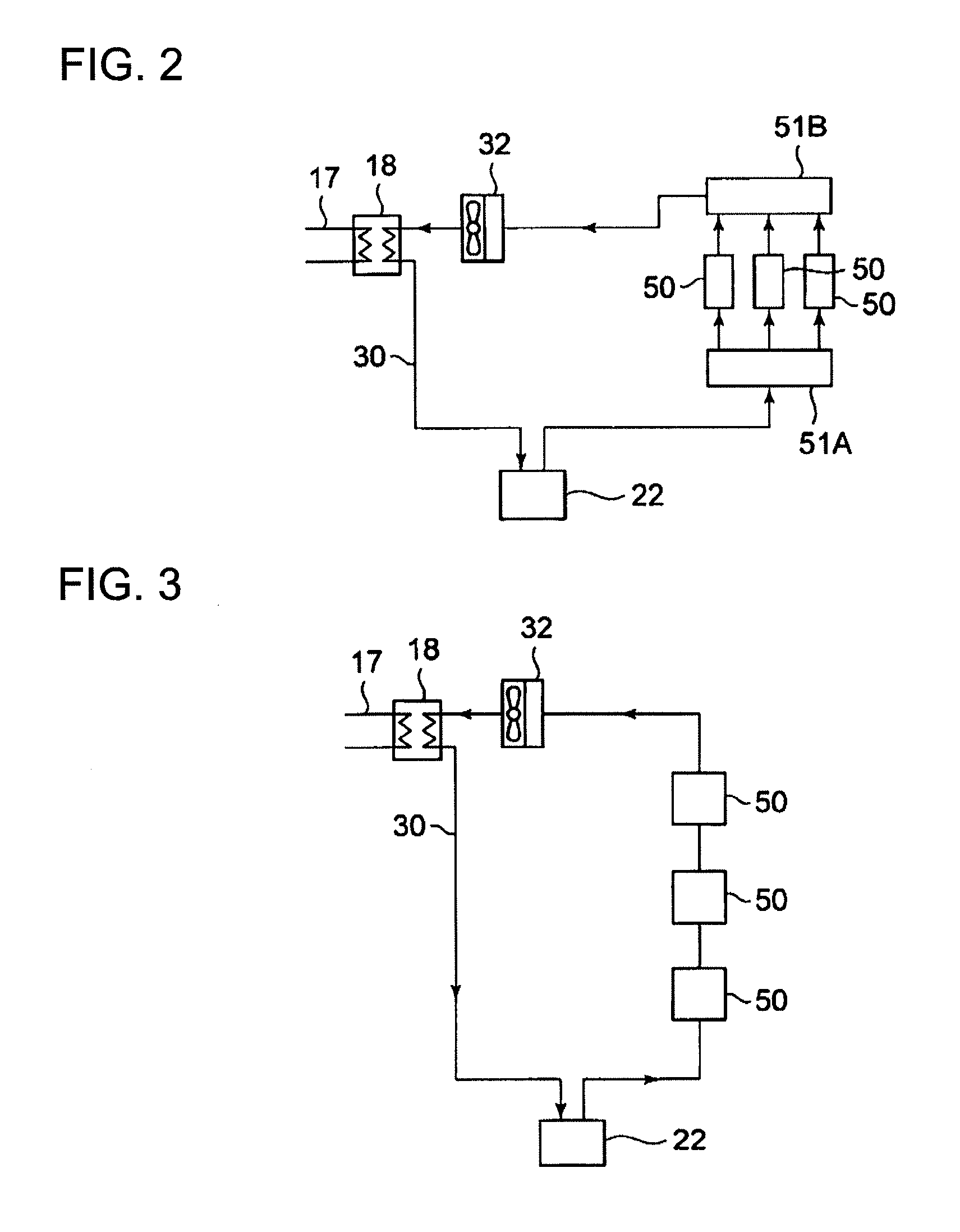Wind turbine generator
a wind turbine generator and wind turbine technology, applied in the direction of marine propulsion, vessel construction, greenhouse gas reduction, etc., can solve the problems of increasing heat loss from the generator and heat loss from the hydraulic transmission, and achieve the effects of increasing the cross-sectional area simplifying the reinforcement of the duct part, and increasing the cross-sectional area
- Summary
- Abstract
- Description
- Claims
- Application Information
AI Technical Summary
Benefits of technology
Problems solved by technology
Method used
Image
Examples
first preferred embodiment
[0076]FIG. 1 shows an overall structure of a wind turbine generator in relation to a first preferred embodiment. FIG. 1 shows a wind turbine generator 1 which mainly includes a tower 2, a nacelle 4 supported to the tower 2 and a rotor 6 which rotates by wind power.
[0077]FIG. 1 shows the wind turbine generator 1 of an offshore type installed at the seal level (SL). However, the wind turbine generator 1 may be installed on shore.
[0078]The rotor 6 is formed by at least one blade 6A, e.g. three blades, and a hub 6B which supports the blade 6A. The hub 6B is connected to a main shaft 5 housed in the nacelle 4. By this, the wind acting on the blade 6A rotates the rotor 6, thereby rotating the main shaft 5 which is connected to the hub 6B.
[0079]A hydraulic transmission 10 and a generator 20 are housed in the nacelle 4. The hydraulic transmission 10 includes a hydraulic pump 12 connected to the main shaft 5, a hydraulic motor 14 connected to the generator 20 and an oil line 16 arranged betw...
second preferred embodiment
[0106]A wind turbine generator in relation to a second preferred embodiment is explained. The wind turbine generator of the second preferred embodiment has the same structure as the wind turbine generator 1 of the first preferred embodiment except for a fan additionally provided in the duct part 40 of the nacelle 4. Thus, the components that are already explained in the first preferred embodiment are indicated by the same reference numbers and are not explained further and mainly the structure different from the first preferred embodiment is explained here.
[0107]FIG. 5 shows a structure around the duct part 40 of the wind turbine generator in relation to the second preferred embodiment. FIG. 5 shows a fan 52 provided in the duct part 40 of the nacelle 4 in addition to the heat exchanger 50. By providing the fan 52 in the duct part 40, the intake amount of the ambient air into the duct part 40 is increased, thereby increasing the amount of heat the ambient air receives from the cooli...
third preferred embodiment
[0121]A wind turbine generator in relation to a third preferred embodiment is explained. The wind turbine generator of the third preferred embodiment has the same structure as the wind turbine generator 1 of the first preferred embodiment except for a shutter additionally provided in the duct part 40 of the nacelle 4. Thus, the components that are already explained in the first preferred embodiment are indicated by the same reference numbers and are not explained further and mainly the structure different from the first preferred embodiment is explained here.
[0122]FIG. 9 shows a structure around the duct part 40 of the wind turbine generator in relation to the third preferred embodiment. FIG. 9 shows a shutter 54 provided in the duct part 40 of the nacelle 4 in addition to the heat exchanger 50. As shown in FIG. 9, the shutter 54 may be constituted of a plurality of louver panels 55 arranged approximately parallel to one another and a frame supporting the louver panels 55. A variety...
PUM
 Login to View More
Login to View More Abstract
Description
Claims
Application Information
 Login to View More
Login to View More - R&D
- Intellectual Property
- Life Sciences
- Materials
- Tech Scout
- Unparalleled Data Quality
- Higher Quality Content
- 60% Fewer Hallucinations
Browse by: Latest US Patents, China's latest patents, Technical Efficacy Thesaurus, Application Domain, Technology Topic, Popular Technical Reports.
© 2025 PatSnap. All rights reserved.Legal|Privacy policy|Modern Slavery Act Transparency Statement|Sitemap|About US| Contact US: help@patsnap.com



